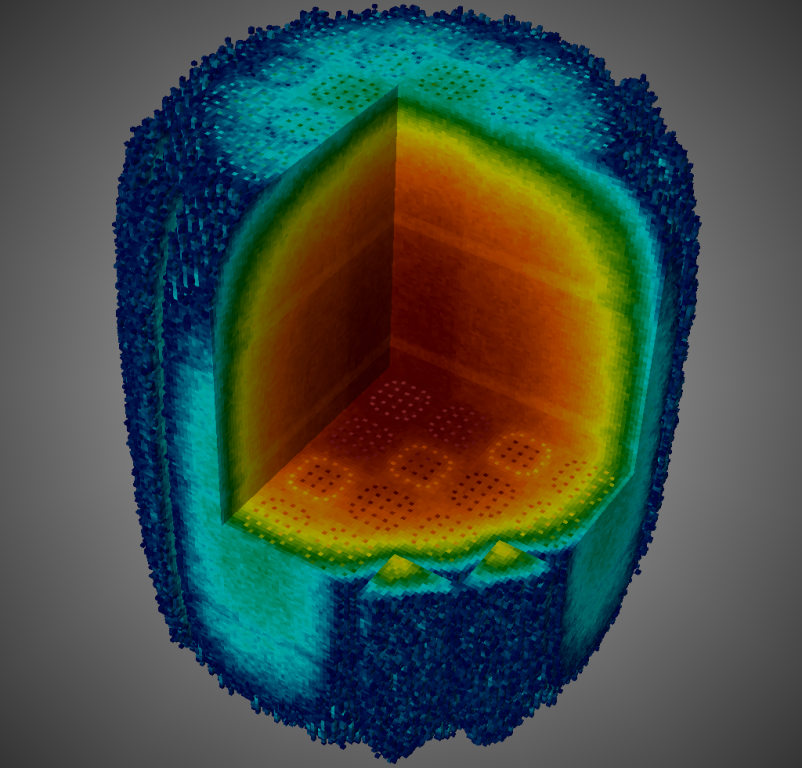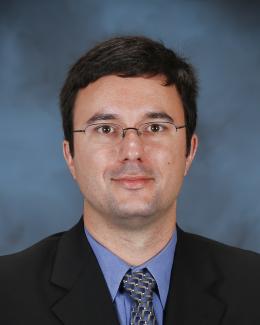Project Details

Small modular reactors (SMRs) and advanced reactor concepts (ARCs) will deliver clean, flexible, reliable, and affordable electricity while avoiding the traditional limitations of large nuclear reactor designs, including high capital costs and long construction timelines. Current advanced reactor design approaches leverage decades of experimental and operational experience with the US nuclear fleet and are informed by calibrated numerical models of reactor phenomena. The exascale SMR (ExaSMR) project generates virtual reactor design simulation datasets with high-fidelity, coupled physics models for reactor phenomena that are truly predictive, reflecting as much “ground truth” as experimental and operational reactor data. The ExaSMR virtual designs can accelerate the currently cumbersome advanced reactor concept-to-design-to-build cycle that has constrained the nuclear energy industry for decades. ExaSMR can also provide an avenue for validating existing industry design and regulatory tools.
ExaSMR integrates the most reliable and high-confidence numerical methods for modeling operational reactors, namely, the reactor’s neutron state with Monte Carlo (MC) neutronics and the reactor’s thermal fluid heat transfer efficiency with high-resolution computational fluid dynamics (CFD)—and all for efficient execution on exascale systems. ExaSMR builds on a base of simulation applications that have demonstrated high efficiency on current petascale-class leadership computing systems. The ExaSMR effort also provides value to US nuclear fuel providers and the broader nuclear community through the generation of highly detailed virtual datasets of operational and advanced concept nuclear reactors.
ExaSMR’s exascale challenge problem will open the door to high-confidence prediction of advanced reactor conditions, such as during low-power conditions at startup via the initiation of natural circulation of the coolant flow through a small reactor core and its primary heat exchanger. The exascale software orchestrating this simulation, known as ENRICO, ensures intimate coupling of CFD (Nek5000) and MC neutron transport modules through a common interface that supports multiple exascale simulation technologies: one targeting the exascale Frontier architecture at ORNL (Shift) and another targeting the exascale Aurora system at Argonne National Laboratory (OpenMC). Exascale neutron transport simulations for ExaSMR will accommodate a full-core SMR model, which typically has ~40 fuel assemblies (each with ~300 fuel rods). e MC portion of the simulation will orchestrate 10B particles per eigenvalue iteration with pin-resolved reaction rates having 3 radial tally regions and 20 axial levels and approximately 150 nuclides and 8 reactions per nuclide in each tally region. These calculations are expected to demonstrate unprecedented accuracy.
Exascale CFD requirements for ExaSMR will include assembly bundle mesh models with momentum sources from a representative resolved spacer grid and full-core mesh having at least 40M elements and 22B degrees of freedom.
Progress to date
- Completed novel implementation of the Shift MC neutron transport algorithm on GPUs with nearly linear weak-scaling behavior on Summit and a 60× per-node performance speedup over Titan.
- Developed a GPU-enabled version of the Nek5000 CFD code using OpenACC and optimized computational kernels from the Center for Efficient Exascale Discretizations’ libParanumal library for a 20× performance improvement over Titan on Summit.
- A new windowed multipole method that provides on-the- y temperature dependence in continuous-energy nuclear data implemented in both the OpenMC and Shift applications for use on accelerated hardware and a multiphysics driver capable of performing coupled neutronics and fluid flow simulations.
Exascale reactor modeling capabilities delivered by ExaSMR can help inform the design and licensing of advanced and SMRs with unprecedented resolution by improving the fidelity of the modeling of complex physical phenomena occurring within operating nuclear reactors.


